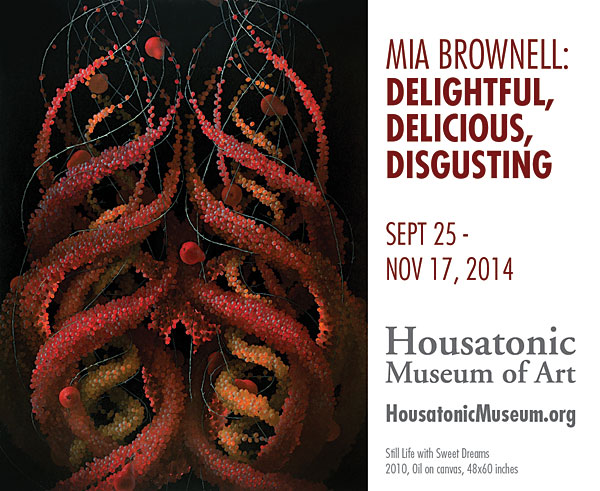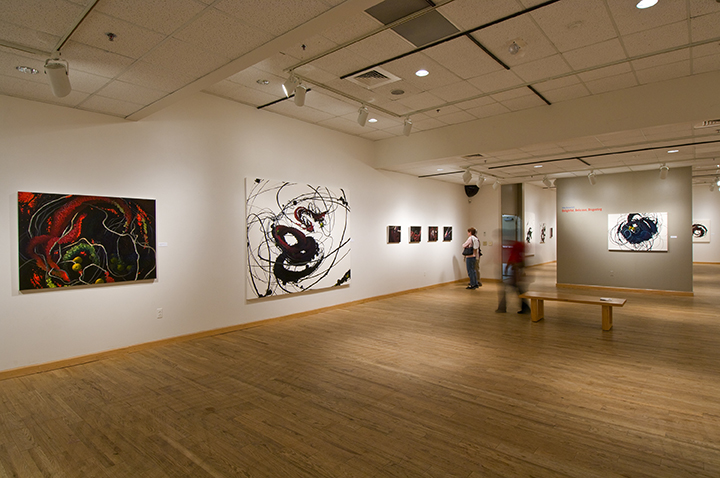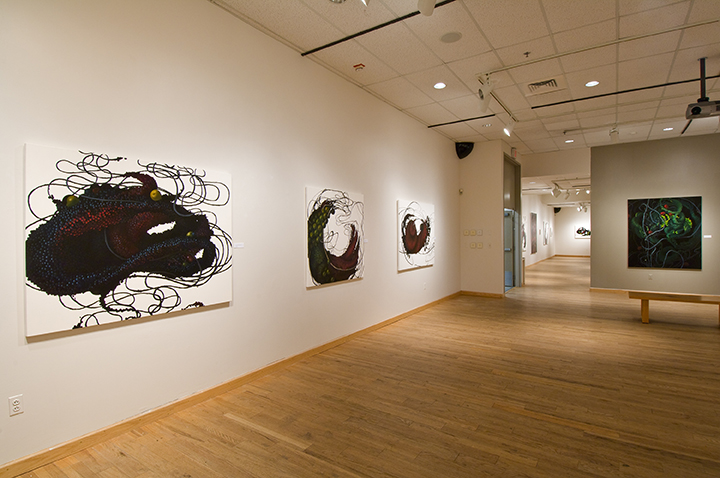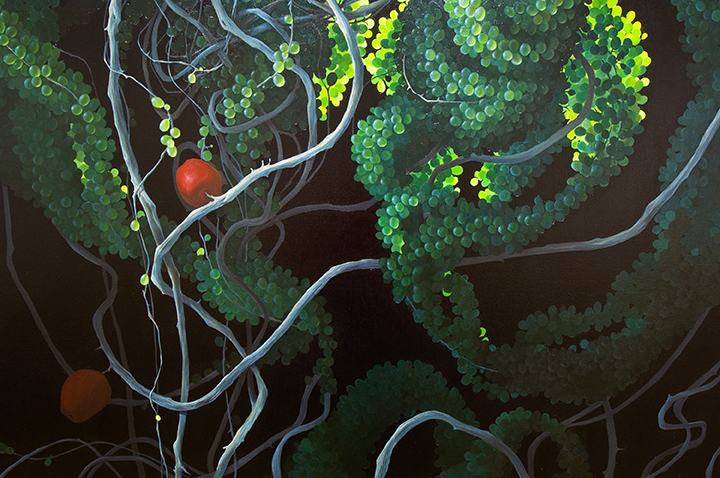MIA BROWNELL: DELIGHTFUL, DELICIOUS, DISGUSTING
September 25 - November 17, 2014
Delightful, Delicious, Disgusting
Paintings by Mia Brownell 2003-2013 at the Housatonic Museum of Art
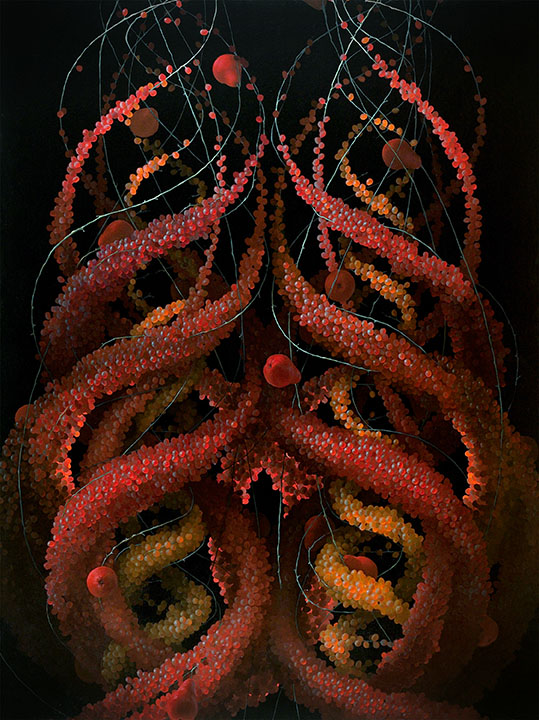
Still Life with Double Double, 2006
Luscious and sensuous, Mia Brownell’s paintings invite us to indulge in “earthly delights” and are themselves ripe with sexual innuendo. Jennifer Anne McMahon writes in her essay, Beauty, that “evolutionary psychologists explain beauty as the kinds of tones and contrasts and shapes which are a sign of fecundity in a person (usually a female). Beauty is conceived as simply a sublimation of desire whose original teleology is procreation.” The surfaces of her canvases, laden with gorgeous fruit at the peak moment of perfection, allude to carnal appetites. Author Elspeth Probyn says that “…sexuality is often paired with food as a way of exploring different modes of sensuality.” Brownell walks a fine line between the artistic and the interesting, whetting the viewer’s appetite by stimulating the senses yet creating a space for detached contemplation.
And what Brownell asks us to contemplate is the brevity of life. “We begin in the madness of carnal desire and the transport of voluptuousness,” wrote the philosopher Arthur Schopenhauer, “we end in the dissolution of all our parts and the musty stench of corpses.” Seventeenth century Dutch still-life paintings of tables laden with gastronomic delights served to remind viewers that all things perish but Brownell’s fruits invite us to relish the sweetness of now.
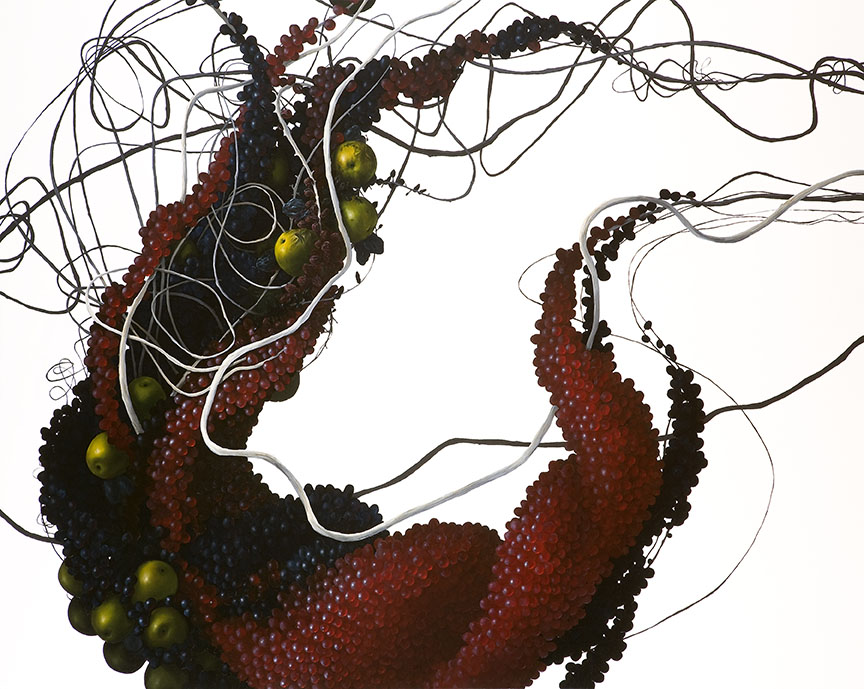
Still Life with Sweet Dreams, 2010
But Brownell’s subject matter also raises contemporary issues surrounding the politics of food: sustainability, genetic modification, commodification of life (plants and animal) as well as the policies affecting production, distribution and consumption. Food, like art, generally provides pleasure if not in the making of it, most certainly in the consuming of it and, as we begin to feast our eyes on her appealing images, we realize that something is amiss—these offerings, though beautiful, are unpalatable. Disgust, an emotion, affects every aspect of human activity, from political affairs to affairs of the heart. It occupies the space between death and life, both ever-present conditions. By juxtaposing the natural and the artificial Brownell critiques the biotech industry: ripe apples and juicy grapes look manufactured rather than vine-grown and the double helix alerts us that they may be the strange mutations of transgenic organisms.
Brownell’s subversive use of an established genre fuses the known with the unusual “offering us excitement—visual pleasure, and as Baudelaire says, ‘The beautiful is always strange,’ by which he means, of course, that it is always strangely familiar and vaguely surprising.” [1]
[1] Hickey, Dave. (2012). The Invisible Dragon. Chicago and London: The University of Chicago Press, p. 11
